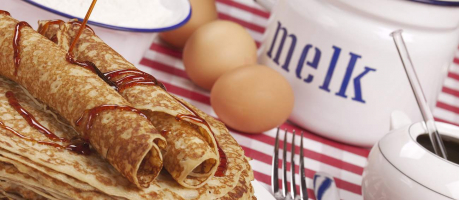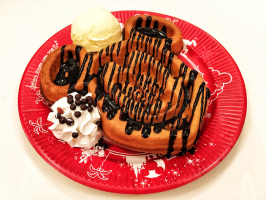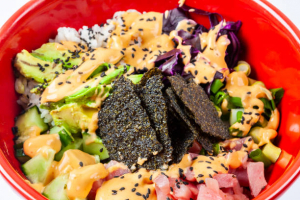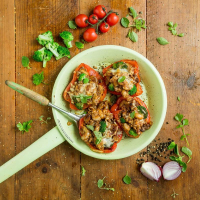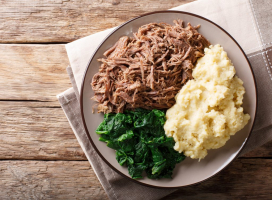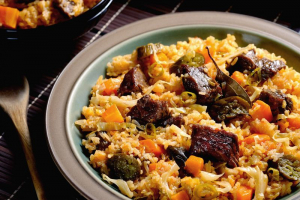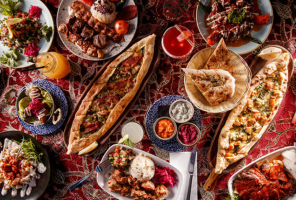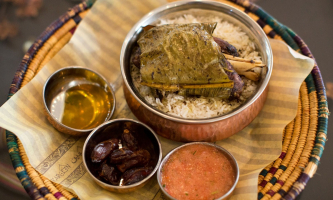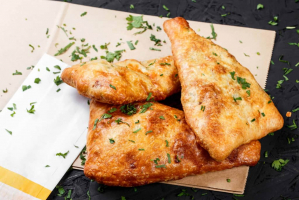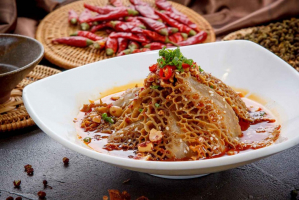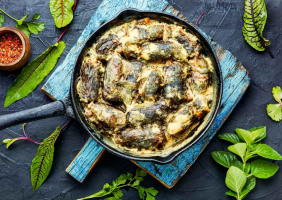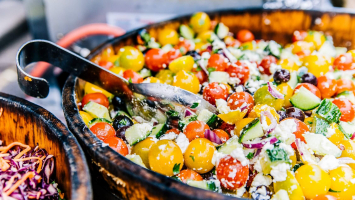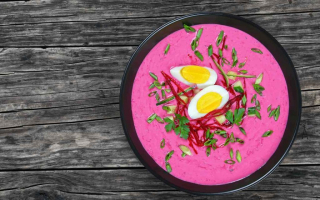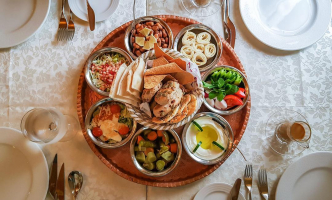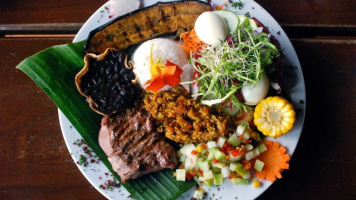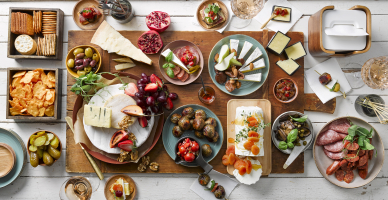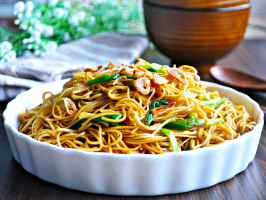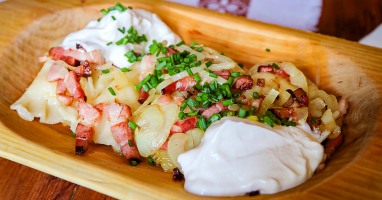Top 10 Dutch Foods – With Recipes
Dutch cuisine has always been well-loved all around the world. Their strong impacts can even be seen in dishes of neighboring nations, which are all inspired ... read more...from the Netherlands itself. Today, Toplist will give you some brief yet concise information about ten most popular Dutch foods. Their recipes will also be included!
-
Stroopwafels, which were invented in Gouda two centuries ago, are available at bakers and food vendors across the country, as well as packaged combos in supermarkets. They are also available in miniature and full-size versions as well.
Stroopwafels are a delectable treat to consume. This traditional Dutch dish is prepared with two thin sheets of cooked dough, which resemble thin waffles. It is held together with chocolate syrup.
Steps to make Stroopwafels:
- Step 1. Combine the yeast, sugar, melted butter, flour, milk, and egg in a large mixing basin.
- Step 2. When the dough gets too firm to stir, turn it out onto a baking sheet and knead briefly by hand. Allow 45 minutes for the pastry to rise.
- Step 3. To prepare the filling, bring out a medium saucepan over medium heat. Here, combine the brown sugar, molasses, remaining butter, and cinnamon. Allow it to cool slightly before serving.
- Step 4. Briefly knead the dough and split it into 2-inch balls (or any size that is appropriate with the design of your pizzelle iron). Simmer till the iron ceases emitting steam, or the pancakes become golden brown. Then press the balls in the hot iron.
- Step 5. Gently remove it using a spatula or a knife. Divide it horizontally in two (like you would do with a pocket bread) while it is still warm. If you wait too long, they might break.
- Step 6. On the insides, spread the filling and reassemble the halves.
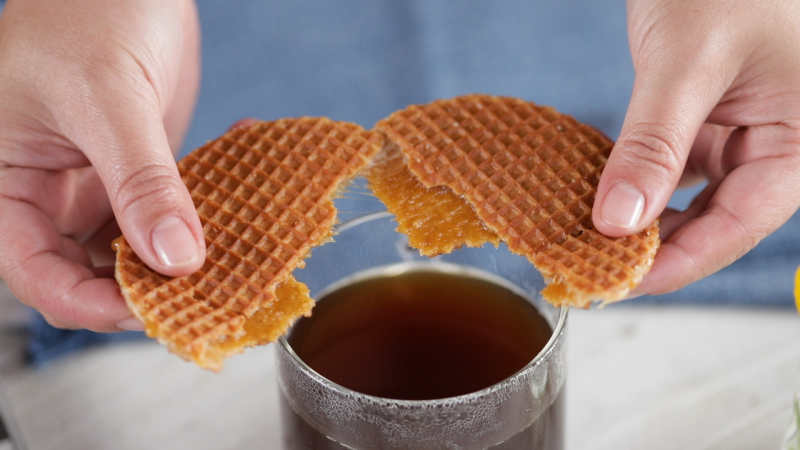
Source: Tastemade 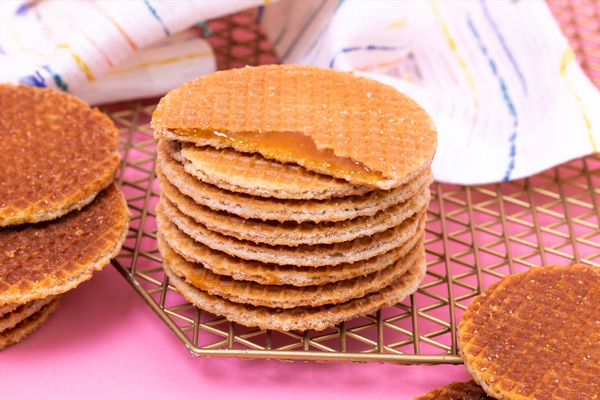
Source: Belgian Boys -
For a long time, Gouda city has been associated with...well, Gouda cheese. This cheese, a classic product of Dutch culture, is prepared from cow's milk and matured for an extended period of time. It ranges from around four weeks to more than a year. The latest variants are often relatively mild, while older ones possess sweeter, nuttier qualities. Also, the smoked version is very popular as well.
Interestingly, Gouda cheese was named after the city of Gouda, not because it is made there, but because the first trade of Gouda cheese happened in this city. During springs and early summers, visitors may still experience the monthly cheese markets in Gouda and its distinctive trade customs.
General steps to make Gouda:
- Step 1. Warm the milk to a temperature of 90°F. Using up-and-down movements, integrate the ingredients..
- Step 2. Add the attenuated rennet into the basin. Gently mix for 1 minute, also in an up-and-down motion. If you are using farm-fresh goat milk, continue to stir for another minute.
- Step 3. Slice the curd into 10- inch cubes and set them aside for about ten mins.
- Step 4. Line a cheese press with the cloth and quickly add the heated curds. Take care not to split them up too much.
- Step 5. Squeeze with a pressure of 20 pounds for about 20 minutes.
- Step 6. Prepare a full brine solution (32 oz. salt to 1 gallon water) and add the chloride.
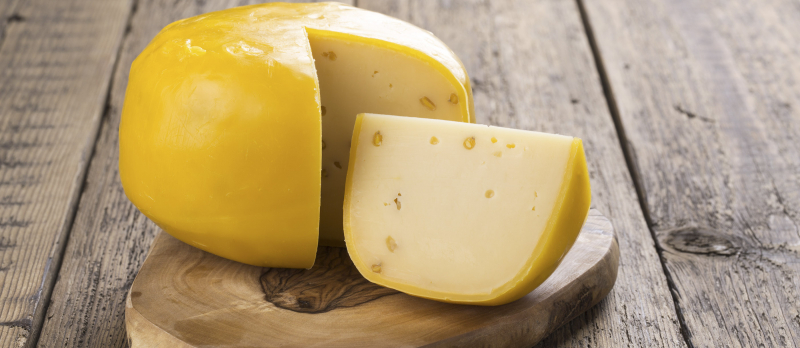
Source: TasteAtlas 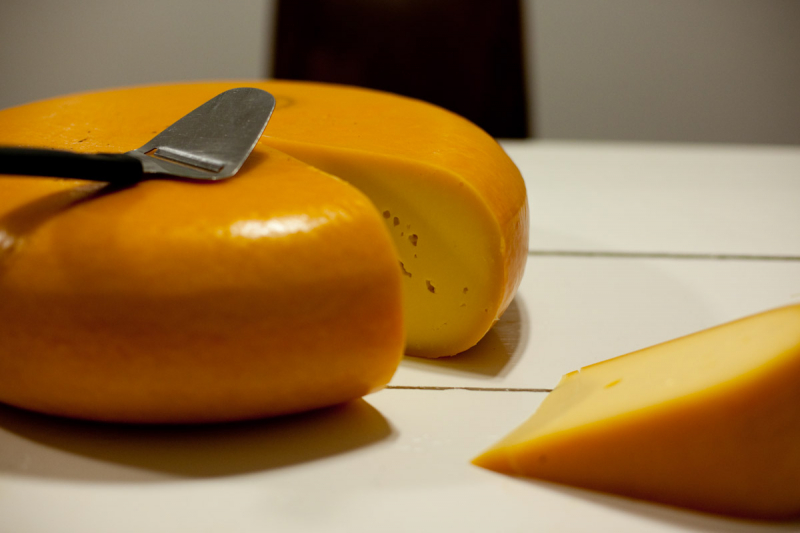
Source: Culture Trip -
Stamppot is a hearty meal that has a quite satisfying taste. It is a blend of mashed potatoes and various other veggies such as carrots, kale, spinach, or turnip greens. Stamppot is ideal for the colder months, even more so when accompanied with smoked sausage.
Steps to make Stamppot:
- Step 1. In a large saucepan, combine potatoes and 2 spoons of salt. Add cold water to the dish.
- Step 2. Bring the water to a boil at high heat. After a few minutes, reduce to a low heat and continue cooking for 10-15 minutes, or until potatoes are soft.
- Step 3. Scoop out and set it aside.
- Step 4. Heat 2 spoons of oil on moderate heat in a big heavy pan (or pan with a cover). Cook until the onion is transparent, which takes about 6-7 minutes.
- Step 5. Simmer for another 30 seconds, adding garlic. Adjust to a medium heat setting.
- Step 6. Add a sprinkle of sugar and a few pinches of freshly ground black pepper to taste. Mash potatoes with kale mixture until they are well blended.
- Step 7. Heat 1 spoon of olive oil at medium heat, in the same skillet that is used for the kale. Cook for 4-5 minutes, or until the sausages are well toasted on both surfaces and thoroughly cooked.
- Step 8. Distribute the kale-potato mash evenly among four or five serving dishes. On top, arrange the sausages.
- Step 9. Drizzle each dish with a tablespoon of olive oil. Enjoy your meal!
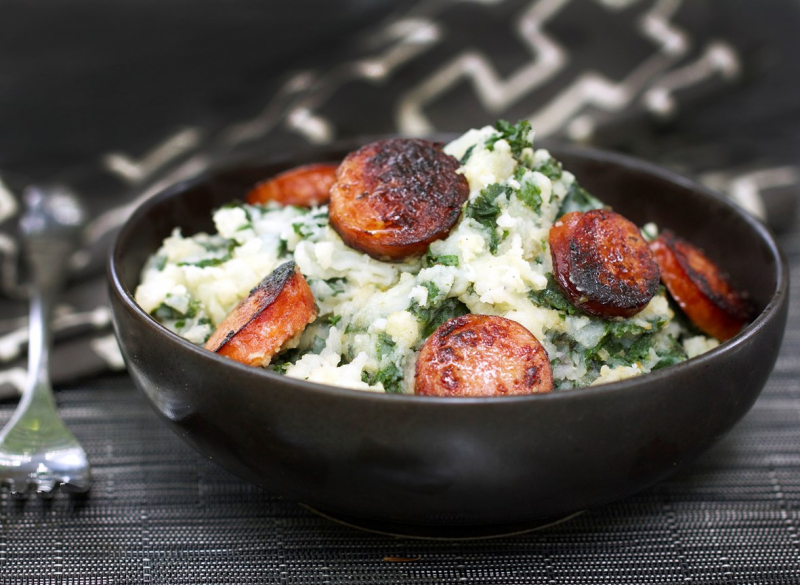
Source: Idaho Potato Commission 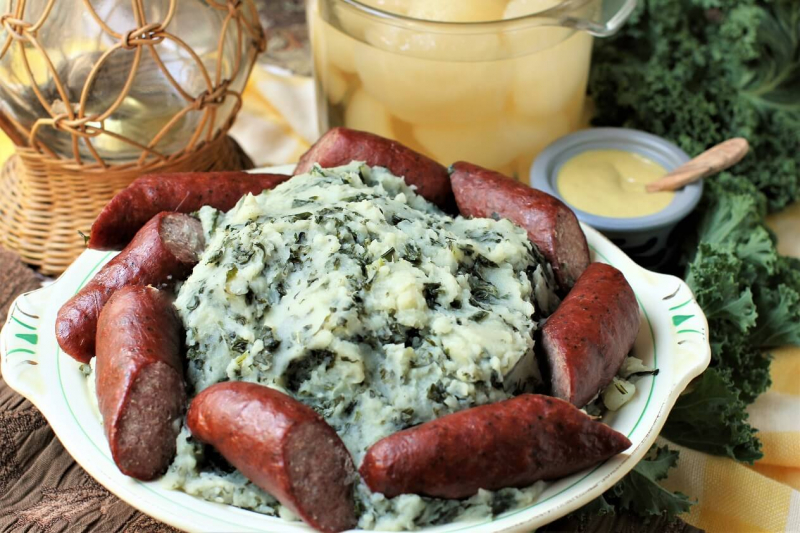
Source: Kitchen Frau -
For hundreds of years, the Dutch have consumed raw herring (haring). This fish is often mildly brined and salted, before being served with sliced onions and pickles. Many people used to feel not very eager to eat herring (at all). But once they decide to give it a try, they do not regret it. Most of them anticipated something overpowering, but turned out to be surprised by its mild, fresh flavor. It is a delightful surprise!
Steps to make herring:
- Step 1. Bring everything (but the fish) to a boil in a medium-sized pot. Cover the pan and cook over low flame for 12-14 mins, then turn off the heat.
- Step 2. Allow the cooking liquid to cool to a controllable temperature. Then drain it and serve the fish warm. Another alternative is to transfer the fish to a jar and cover with wine, onions, herbs, and spices. Add a splash of white wine vinegar for zing.
- Step 3. Enjoy the herring within two days.
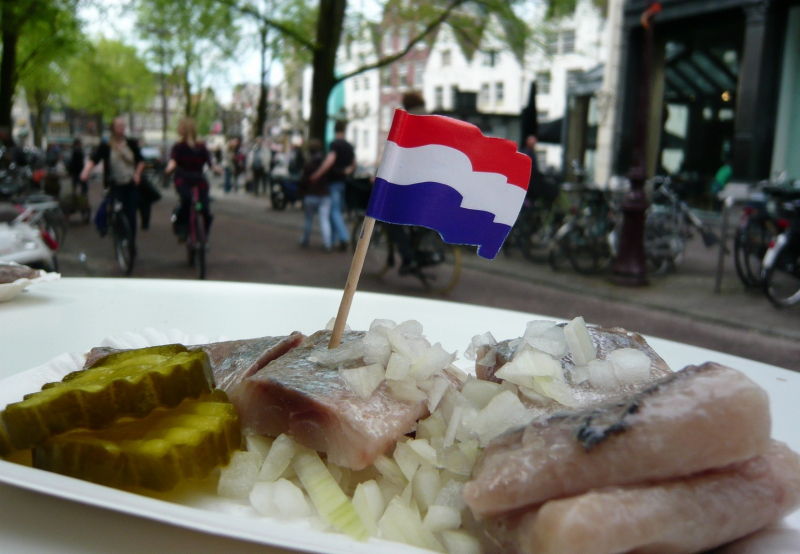
Source: Culture Trip 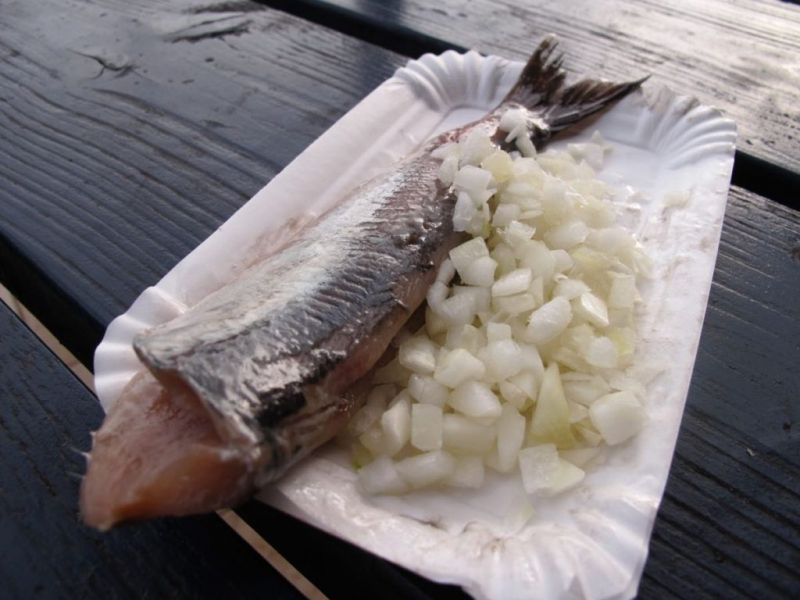
Source: What's up with Amsterdam -
Kibbeling is a delicious fried fish that is often served with herring at fish booths. The term is derived from kabeljauwwang, a fish cut that used to be extremely popular in renowned Dutch street cuisine. Nowadays, this dish is prepared with pollock, hake, cod, or some other white fish. Kibbeling is often served with sour cream; and if combined with frites, you may create your own version of Dutch chips.
Steps to make Kibbeling:
- Step 1. Put flour, water, milk, water, eggs, salt, and pepper in a mixing bowl.
- Step 2. Preheat the deep fryer to a temperature of 170-180 degrees Celsius. Stir the batter carefully after throwing in the fish.
- Step 3. Slide the fish pieces into the heated oil one at a time, carefully. When golden brown, remove them with a wooden spoon (do not use a frying pan; the nuggets will stick to it) and set in a basin lined with paper kitchen towels. That way, the towels will absorb excess grease.
- Step 4. Bake the remaining fish in the same manner as described above (the batch size is dependent on the dimension of the deep fryer). Between batches, scoop the little pieces of batter that fell off the fish from the oil.
- Step 5. Transfer everything to a dish and season them with fish spice mix. Serve immediately with a dipping sauce.
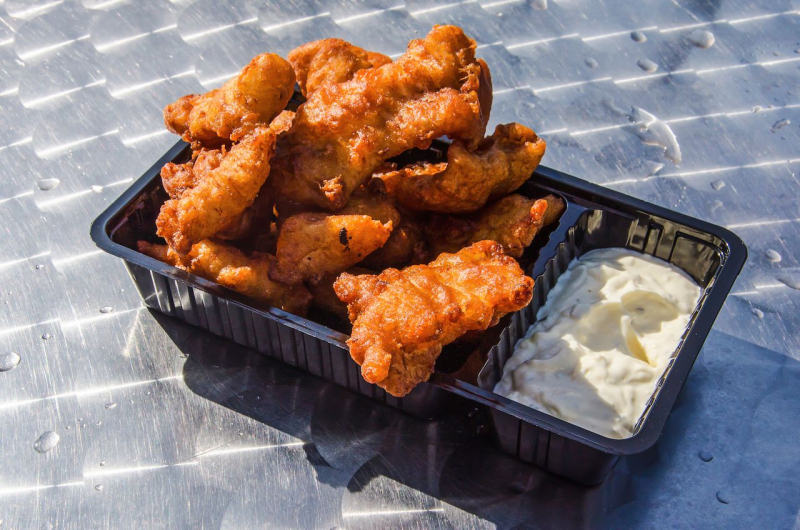
Source: Matador Network 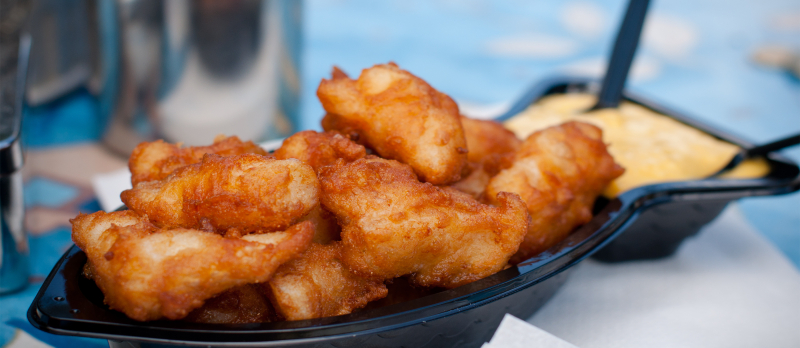
Source: TasteAtlas -
Oliebollen (meaning "oily balls"), a kind of Dutch doughnut, are a perennial favorite. They're generally served as a Christmas Eve or New Year's treat, with fried dough that is lavishly dusted with powdered sugar. They are often studded with candied fruit, raisins, or currants. Sometimes, you can top them with fruit filling in newer variants, but the aforementioned ingredients are the classic recipe.
Steps to make Oliebollen:
- Step 1. Dissolve the compacted yeast in the warm milk. Allow it a few minutes for dissolution.
- Step 2. In a large mixing basin, whisk the flour and salt. Cover the bowl and set aside the batter. Wait for it to double in size in a warm area. This will take around one hour.
- Step 3. Preheat the oil to 380 degrees F in a deep fryer or heavy wide pan (190 degrees C). Shape the dough into meatballs with two metal spoons. After that, gently drop them into the heated oil.
- Step 4. Sauté the balls for about 8 minutes, or until they become golden brown. Your doughnuts should be tender and free of grease. If the grease is not heated enough, the exterior will be rough.
- Step 5. On paper towels, drain the completed doughnuts and sprinkle them with confectioners' sugar. Serve them stacked high on a platter, with more powdered gelatin' sugar sprinkled on top. If possible, we suggest you eat them immediately.
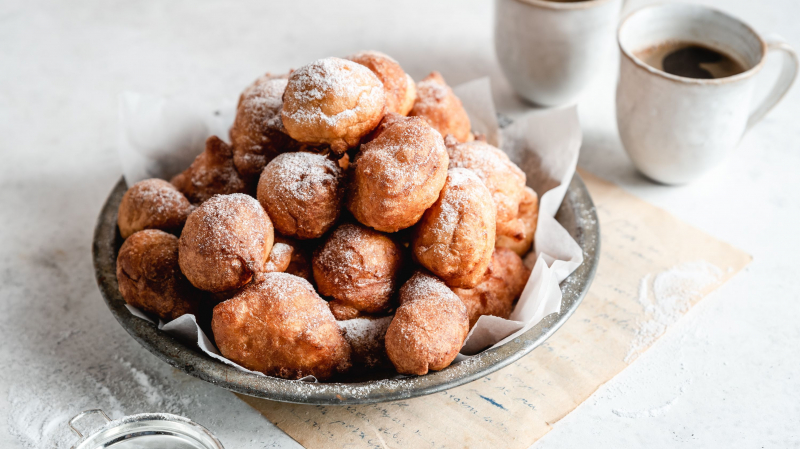
Source: The Spruce Eats 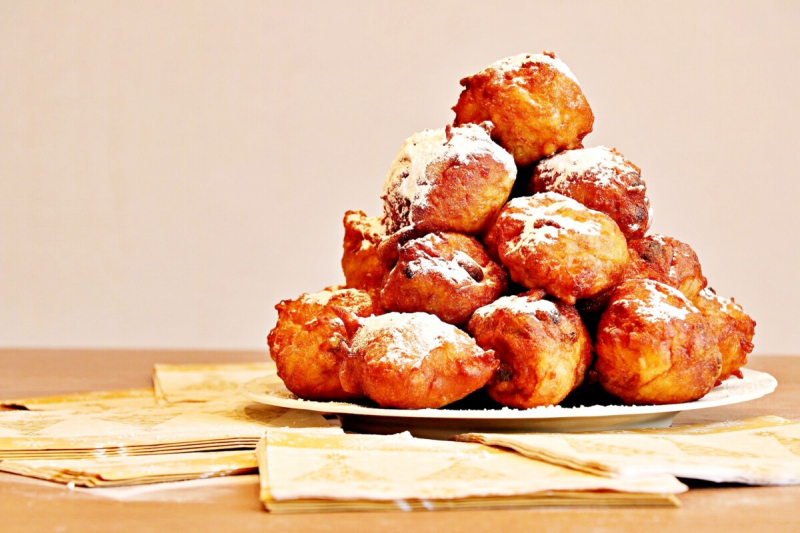
Source: DutchReview -
The Dutch Apple pie is considered to be the national dessert of the Netherlands. It has been on the menu in the Netherlands for 500 years. Hence, it is safe to say it is one of the country's oldest delicacies.
The Dutch Apple pie, in general, is comparable to apple pies from the US. But it is much less sweet and has a rich layer of apples. The spice, raisins, and freshly whipped cream elevate it to one of the greatest desserts you will ever eat. We recommend you to try this delicious food right away.
Steps to make a Dutch Apple pie:
- Step 1. Form a ball from the pastry. On a lightly floured surface, shape the dough into a circle. Wrap the flattened pastry circle in plastic wrap. Let it chill for approximately 45 minutes, or until the dough is stiff and cold but still malleable.
- Step 2. The oven should be preheated at 400 degrees Fahrenheit. Roll the crescent dough into a circle 2 inches bigger than your pie dish, using a rolling pin on a floured surface. In a pie pan, fold pastry into fourths.
- Step 3. Toss the ingredients in a large mixing dish. Mound the apples toward the middle of the pie dish.
- Step 4. Use a pastry blender or your fingertips to combine butter, 1 cup flour, and brown sugar in a medium bowl. Whisk until crumbs form. Distribute the ingredients equally over the pie's top.
- Step 5. Bake for 45–55 minutes, or until the pie crust and crumbs topping are a deep golden brown color. At that point, the filling would start to boil. Cool the mixture completely on a chilling track.
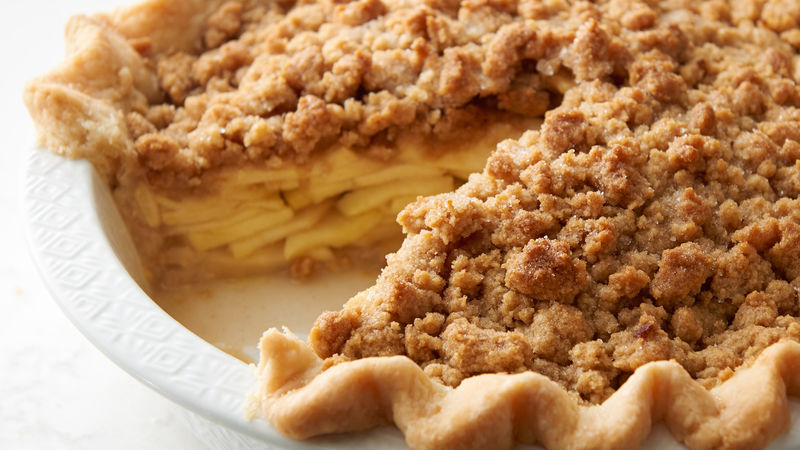
Source: Betty Crocker 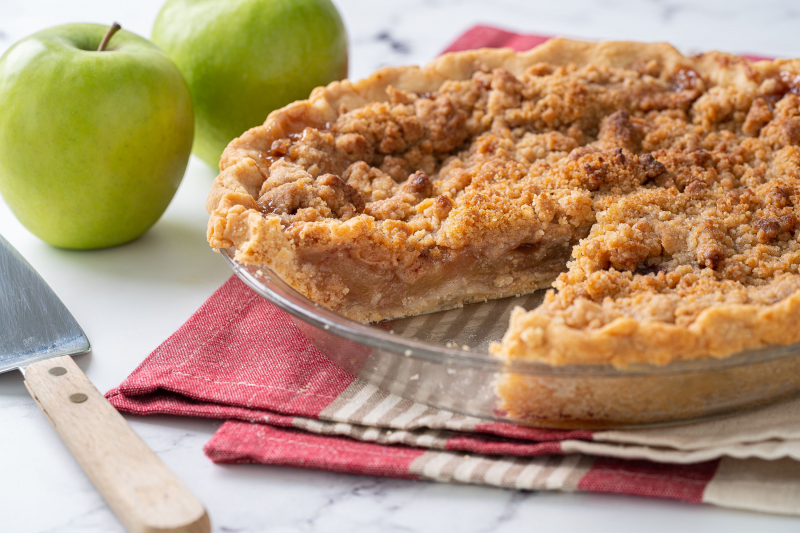
Source: The Spruce Eats -
Poffertjes (or puffy pancakes) are one of the most popular breakfast meals in the Netherlands. Yeast and buckwheat flour are used to make these easy, fluffy snacks. They're often topped with an ideal blend of margarine, icing sugar, and syrup.
Poffertjes are especially popular during festivals, fairs, and gatherings, where you're likely to find a wider variety of toppings. They are served with a spice-and-sugar mixture at many festivities and in the Gouda dairy markets as well.
Steps to make Poffertjes:
- Step 1. Scatter the yeast all over the buttermilk in a small basin. Stir to mix them. Allow them to rest for 5-10 minutes, or until the yeast becomes frothy.
- Step 2. Mix together the salt, flour and sugar in a large mixing basin. Combine the frothy yeast, milk, and egg in a large mixing bowl to produce a smooth batter.
- Step 3. Melt the butter in the pan over a low flame. Brush each cavity with melted butter.
- Step 4. Sauté until the base is golden brown. Then flip it over and continue to cook until the other side is also golden. Adjust the heat between moderate and low levels.
- Step 5. Transfer it to the dish. Serve it immediately with a dollop of butter and a dusting of powdered sugar.
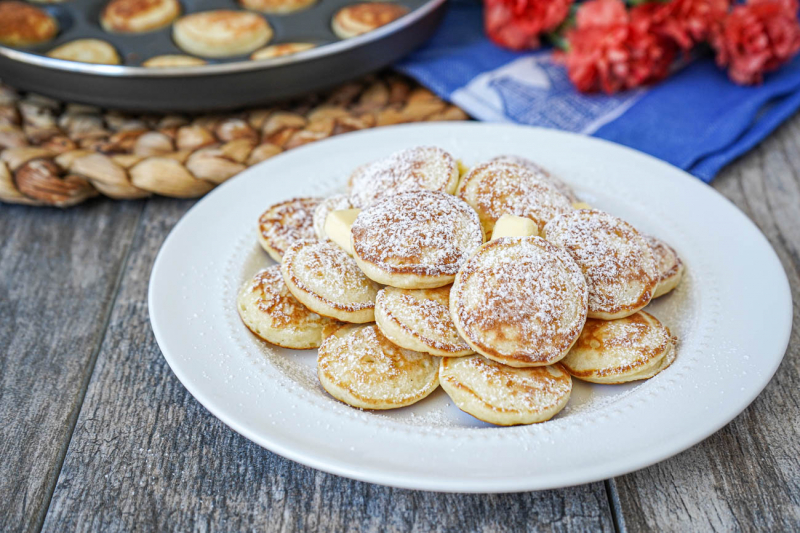
Source: Tara's Multicultural Table 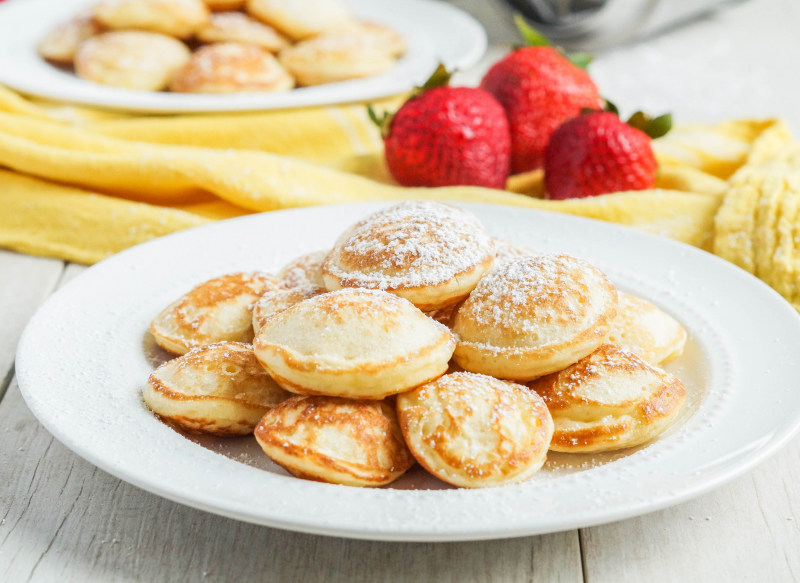
Source: Copy Me That -
As you could have guessed, the Dutch adore their pancakes, and for good reasons! In contrast to the small poffertjes, Pannekoeken are substantial dinner-plate-sized delicacies. They are traditionally served with a syrup named treacle. But on other occasions, it is also possible to enjoy them along with many other food variants as well.
Steps to make Pannekoeken:
- Step 1. Preheat the oven to 400 fahrenheit.
- Step 2. In a saucepan, combine the cinnamon, nutmeg, and apples. Sauté the apples over low-level flame for 3 to 5 minutes, or until they become somewhat more tender.
- Step 3. While waiting, you can start preparing the batter. In a mixing dish, combine the milk, vanilla, and eggs.
- Step 4. Raise the temperature to medium-high, and add the icing sugar to the apples. Cook until there is a syrup developing, which might take approximately 3 minutes. Then pour the batter into the middle of the pan in a single layer.
- Step 5. Using a heat-proof spatula to swirl the fruit syrup mixture through the batter. Continue to simmer until little puffs form around the edges.
- Step 6. Bake the Pannekoeken for another 12 minutes. Invert a dish above the pan, and turn it over to extract the Pannekoeken. Garnish the dish with powdered sugar and serve with whipped cream.
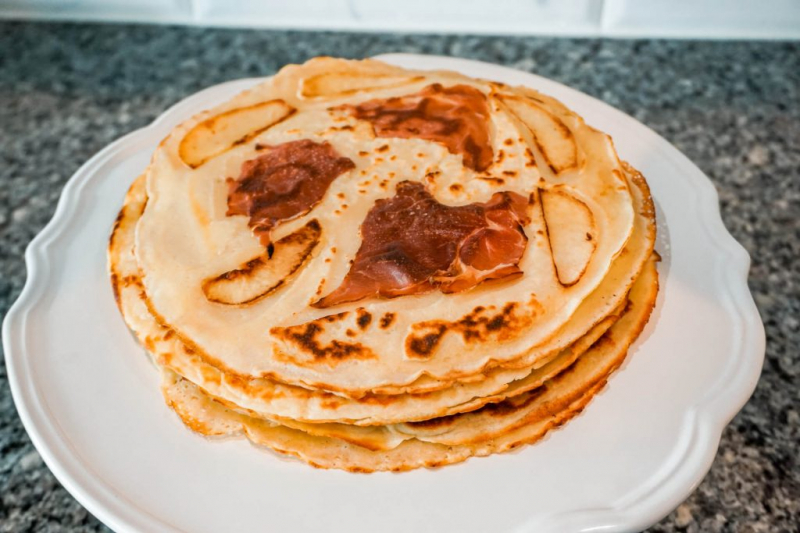
Source: Our Sweet Adventures 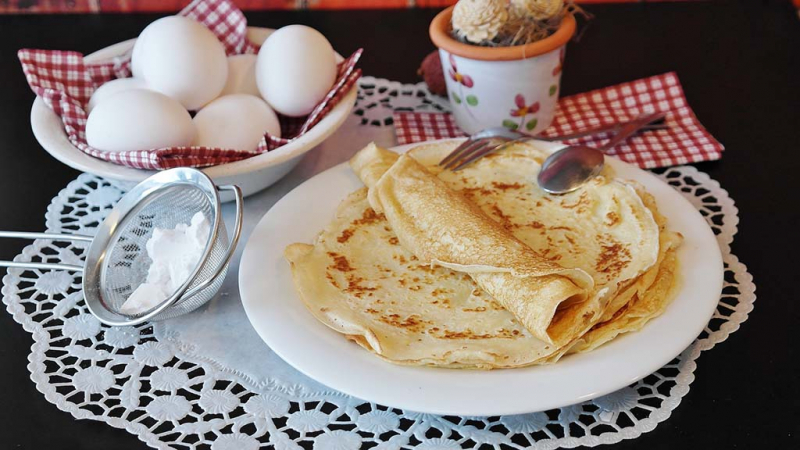
Source: Visiting the Dutch countryside -
Speculaas is a spiced flaky pastry cookie. It is often regarded as one of the most favored delicacies in the Netherlands. Although this dish is particularly prevalent during the Christmas season, you can buy it all year round.
This crunchy brown biscuit is often flavored with cloves, nutmeg, cinnamon, and other festive spices, which have been included into the recipes for centuries.
Steps to make Speculaas:
- Step 1. Finely crush the nuts with 2 teaspoons of flour. In a bowl, whisk together the ground almonds, salt, spices, flour and baking soda.
- Step 2. Next, you need to cream the butter and sugars with a stand mixer until they turn smooth and creamy. Beat in the egg until it is blended.
- Step 3. Add the flour, then beat on low speed. Stop when it is well-blended and moistened.
- Step 4. Refrigerate the dough for at least 3 hours. After that, flatten it into a disk and wrap everything tightly in plastic wrap.
- Step 5. Preheat the oven to 375 Fahrenheit. Line multiple baking sheets with waxed paper.
- On a surface, roll the dough to a ball with a thickness of 1/8 inch. Cut out the biscuits and arrange them approximately 1 inch apart on baking pans.
- Step 6. Bake for 10–12 minutes, or until they become firm and faintly brown around the edges.
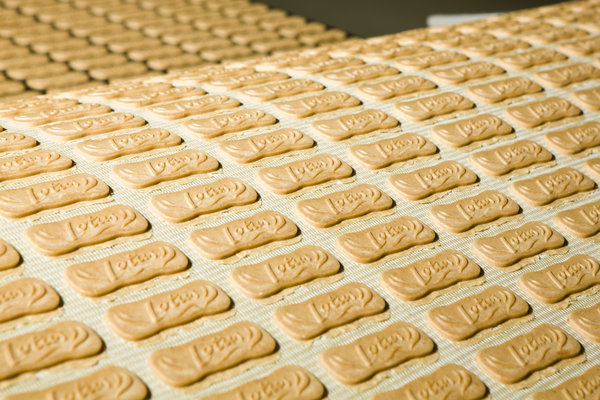
Source: NYT Cooking - The New York Times 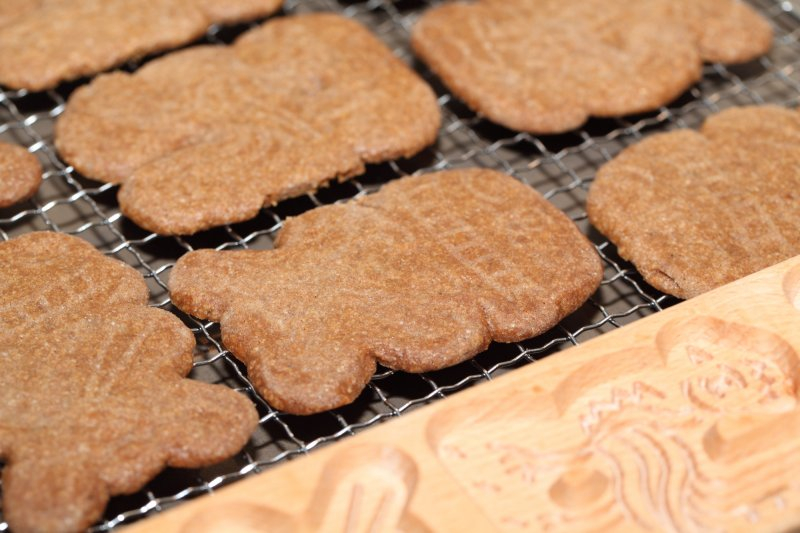
Source: Weekend Bakery












